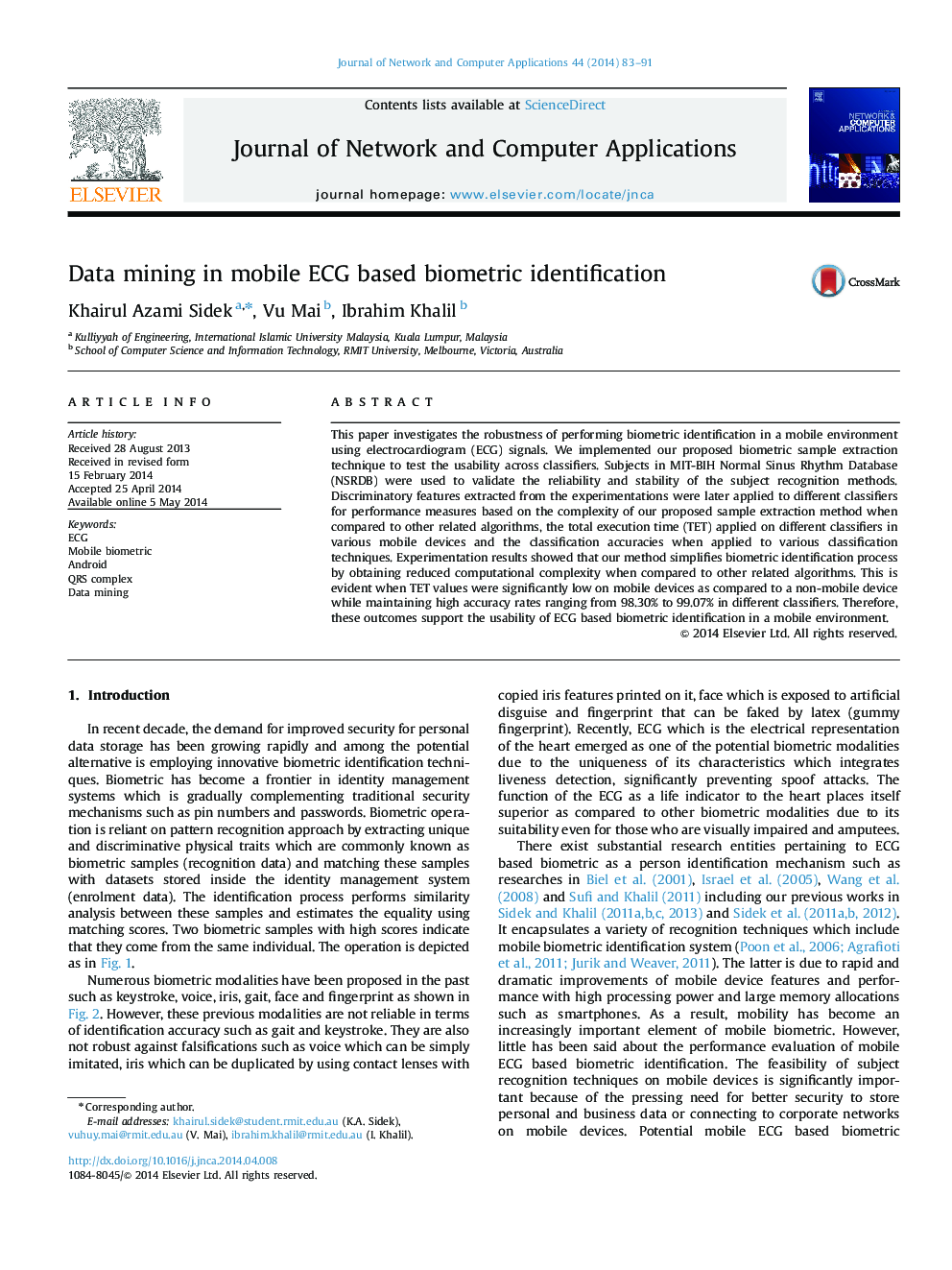| Article ID | Journal | Published Year | Pages | File Type |
|---|---|---|---|---|
| 457194 | Journal of Network and Computer Applications | 2014 | 9 Pages |
Abstract
This paper investigates the robustness of performing biometric identification in a mobile environment using electrocardiogram (ECG) signals. We implemented our proposed biometric sample extraction technique to test the usability across classifiers. Subjects in MIT-BIH Normal Sinus Rhythm Database (NSRDB) were used to validate the reliability and stability of the subject recognition methods. Discriminatory features extracted from the experimentations were later applied to different classifiers for performance measures based on the complexity of our proposed sample extraction method when compared to other related algorithms, the total execution time (TET) applied on different classifiers in various mobile devices and the classification accuracies when applied to various classification techniques. Experimentation results showed that our method simplifies biometric identification process by obtaining reduced computational complexity when compared to other related algorithms. This is evident when TET values were significantly low on mobile devices as compared to a non-mobile device while maintaining high accuracy rates ranging from 98.30% to 99.07% in different classifiers. Therefore, these outcomes support the usability of ECG based biometric identification in a mobile environment.
Keywords
Related Topics
Physical Sciences and Engineering
Computer Science
Computer Networks and Communications
Authors
Khairul Azami Sidek, Vu Mai, Ibrahim Khalil,
